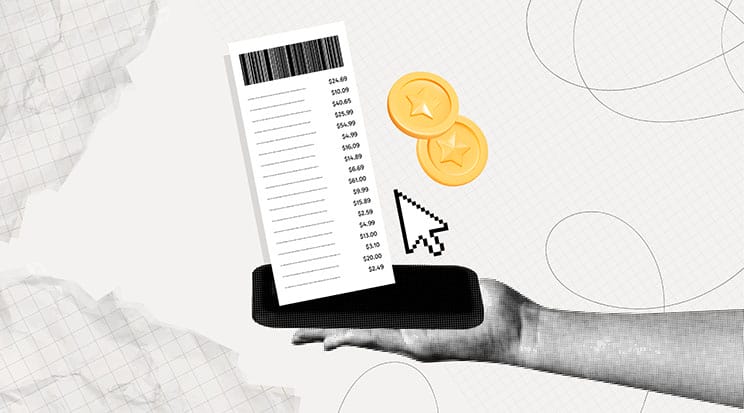Let’s face it. Presale costs for longer term B2B sales processes can really add up. Companies of all sizes deal with them on a regular basis. It is one of the reasons why qualifying sales leads is so important. When sales efforts are used for low quality leads, it results in excessive presale costs and subpar clients.
Even with qualified leads, the cost of sales can still be excessive. This article digs into some strategies that companies are using to help lower or recoup these costs. Feeling confident that each new client is worth the effort spent on their sales process helps continue positive and professional service for that client. Alternatively, negativity toward all that extra work without realizing its value can have a negative effect on the future of the project as well.
Overhead Percentage
Larger companies generally consider sales as overhead. Cost of sales is a key measurement calculated by business accountants. By measuring, and then marking up project costs to account for overhead as a whole, the cost of sales is then recouped.
There’s a lot that goes into overhead. Budding entrepreneurs are often surprised in instances where they discover that, even with a 100% markup on their product or service, they didn’t make any money! The culprit is overhead. Even though they meticulously calculated the cost to create and deliver their product, somehow many overhead costs were not included.
Products and services can have different overhead costs. For example, wages and benefits are usually one of the costliest categories in service businesses. Some examples of overhead cost categories include:
- Wages and benefits
- Taxes
- Building rent and utilities
- Manufacturing equipment and repair
- Inventory
- Loan interest
- Software and SAAS
- Computers, office equipment and repair
- Insurances
- Accounting and other professional fees
- Shipping and logistics
- Sales / Presale
- Marketing
- Travel
- Research and Development
- Training, conferences, industry updates
It’s critical that businesses know their actual cost to produce products or services, including all the overhead. With that data, they can increase the cost of their products or services to modify the percentage of the cost of selling their wares.
Markup the Cost of the Project Itself
When it comes to B2B sales, some sales processes go very smoothly and others seem to drag on and on. This is especially frustrating when the process for a seemingly great client is so long that the sales time alone results in a loss over the project’s length. The only way to recoup the cost is through repeat sales to that client. But those are not always guaranteed.
As a result, some businesses add extra markup to projects with lengthy sales cycles to account for the additional time. This strategy has some downsides though:
- If the prospect doesn’t become a client, there’s no way to recoup the cost
- The added cost could make the final cost less competitive, thus losing the project for that reason
When marking up specific projects for longer sales processes than expected, it is imperative that the pricing structure for a company continues to include sales in the overhead cost bucket too. This will account for both projects gained and projects lost. Then, if a particular prospect results in unusually more time, the markup may be justified to apply to the specific project.
Charge an Up-Front Fee
Charging an up-front fee, regardless of whether the prospect does business with you after receiving the quote, is another way to recoup sales costs. This is particularly appropriate when project quotes require unique or specialized research to determine pricing. Some examples where an up-front fee might be appropriate include:
- Permits must be obtained in order to quote on a project
- An expert’s time is required to research a specific area in order to provide an accurate quote
- Excessive travel is required to provide the quote
While charging up front fees are usually reserved for unique situations, they should be considered when ensuring sales costs are covered in a fair and equitable manner.
Determining how Much to Budget for Sales

Having a history of the cost of selling your services can be invaluable in determining how much of a markup you should charge. This can be both tricky and detailed. Sales personnel may perform multiple roles, requiring a split in their salary to determine cost. Sales time for your products or services may vary widely–either between service or product types, sales people involved, or in general. You’ll need to find a fair and competitive way to add the markup.
Project by Project
A good starting point to determine how much to budget for sales is to calculate sales resources spent at the end of the sales cycle for each project. Record this information on a spreadsheet along with details about the products or services, the quote amount and whether the sale was successful or not.
Depending on the size of your business, gathering information for 6 months or a year can be very beneficial. This data helps in determining the average time spent on each project in relation to its total quoted amount and/or the type of service or product.
Industry Standard
Some industry associations publish information about markup percentages. Conferences also can provide information, either directly from an informational session or through networking with other sales professionals. Finally, professionals that your business hires–such as accountants or business consultants–can offer suggestions for general markups in your industry.
Using industry standards to determine the right markup can be risky, since each business operates differently and has different costs for their expenses. Nonetheless, in the absence of historical data, it can be a viable option to use for recouping your cost of sales.
Enhancing Your Cost of Sales Ratio
Enhancing your cost of sales ratio can improve your company’s profitability and efficiency. Here are some strategies to consider:
- Optimize Pricing: Review your pricing structure. Using the suggestions outlined above to determine your cost of sales, you can then compare your prices with that of the competition. Your pricing needs to reflect the value provided and still remain competitive.
- Streamline Operations: Analyze sales processes to identify inefficiencies. Ensure that sales personnel focus on quality leads and spend the appropriate amount of time nurturing them.
- Invest in Technology: Software and automation tools can make your business processes more efficient and reduce errors. AI is growing rapidly. Businesses that don’t grow with it may be left in the dust.
- Monitor and Adjust Sales Channels: Analyze the performance of different sales channels. Digital marketing and AI can help you focus on the most profitable online platforms. Ensure your other channels are regularly monitored and adjusted as well.
- Enhance Customer Relationships: Reflect on how you can improve customer service and relationships to boost repeat sales. The cost of repeat sales is almost always lower than that required to sell to new customers. You’ll also be strengthening client satisfaction and your company’s overall reputation.
- Train Employees: Provide training for your sales team to improve skills and efficiency. There are many sales techniques, and they constantly change. Ensure your team stays up to date on the latest and greatest.
- Regularly Review Financial Data: Keep an eye on your cost of sales ratio and other financial data so you can make informed adjustments. This is especially important when implementing enhancements to measure their results.
By implementing these strategies, you can work toward a more favorable cost of sales ratio, ultimately leading to better financial health for your business.
Summary
Recouping the cost of B2B sales can be challenging given its typically longer sales cycle. Using a markup percentage, or combining the markup percentage with other strategies, can result in a successful outcome.
Once you determine how much you can use for your markup percentage based on your current business, you can implement numerous strategies to enhance your cost of sales ratio. The enhancements will not only improve your bottom line, but they lead to improved services or products and a healthier company.
